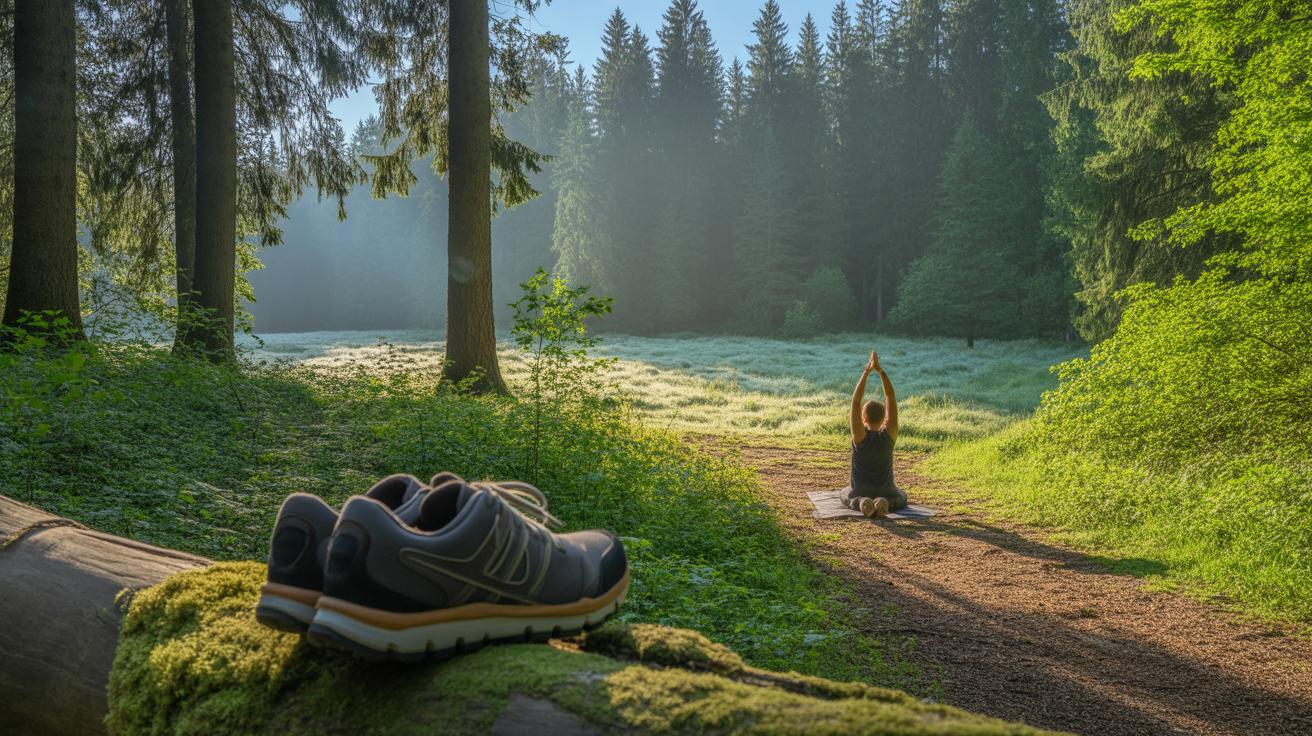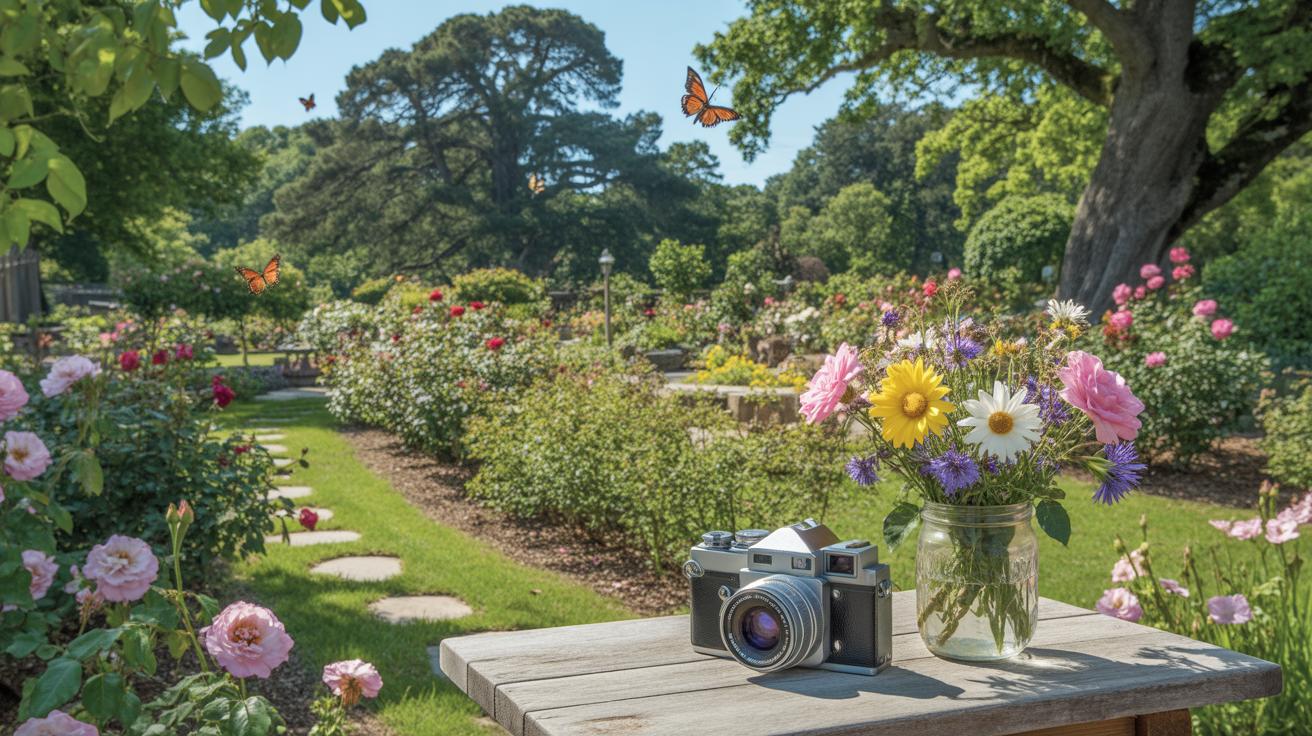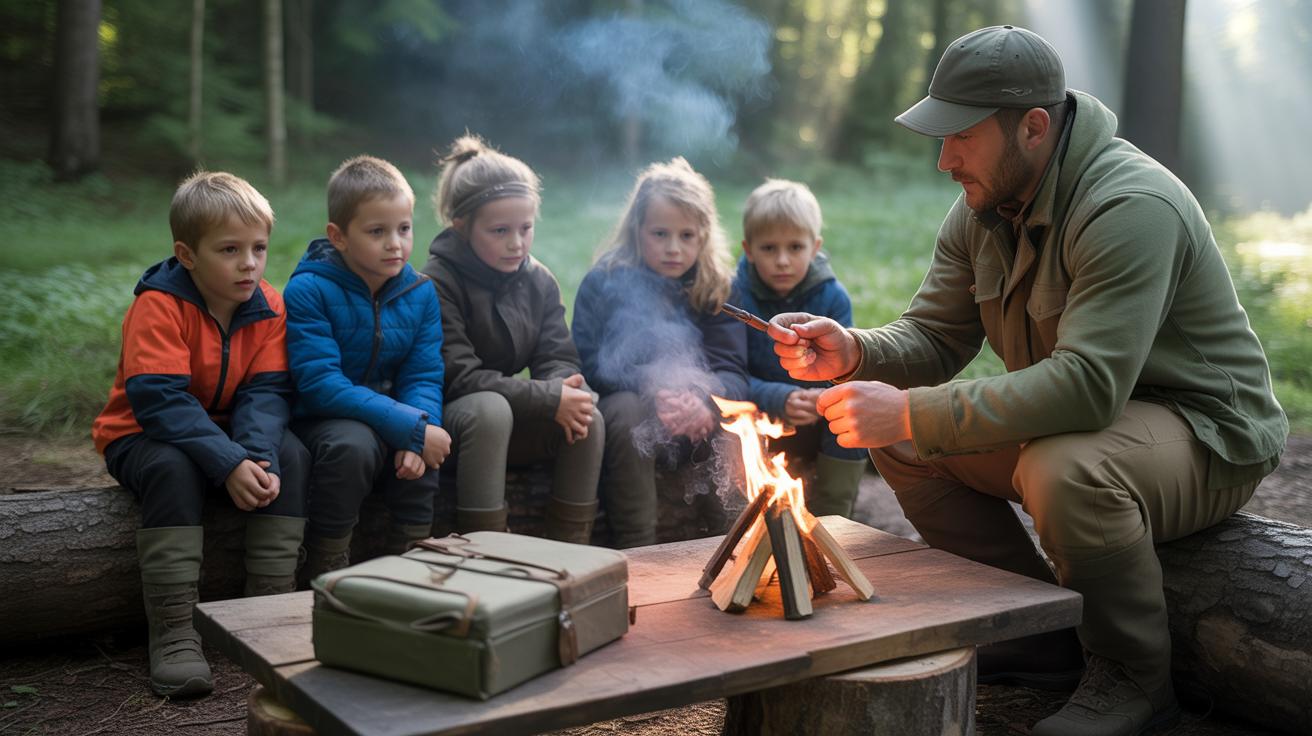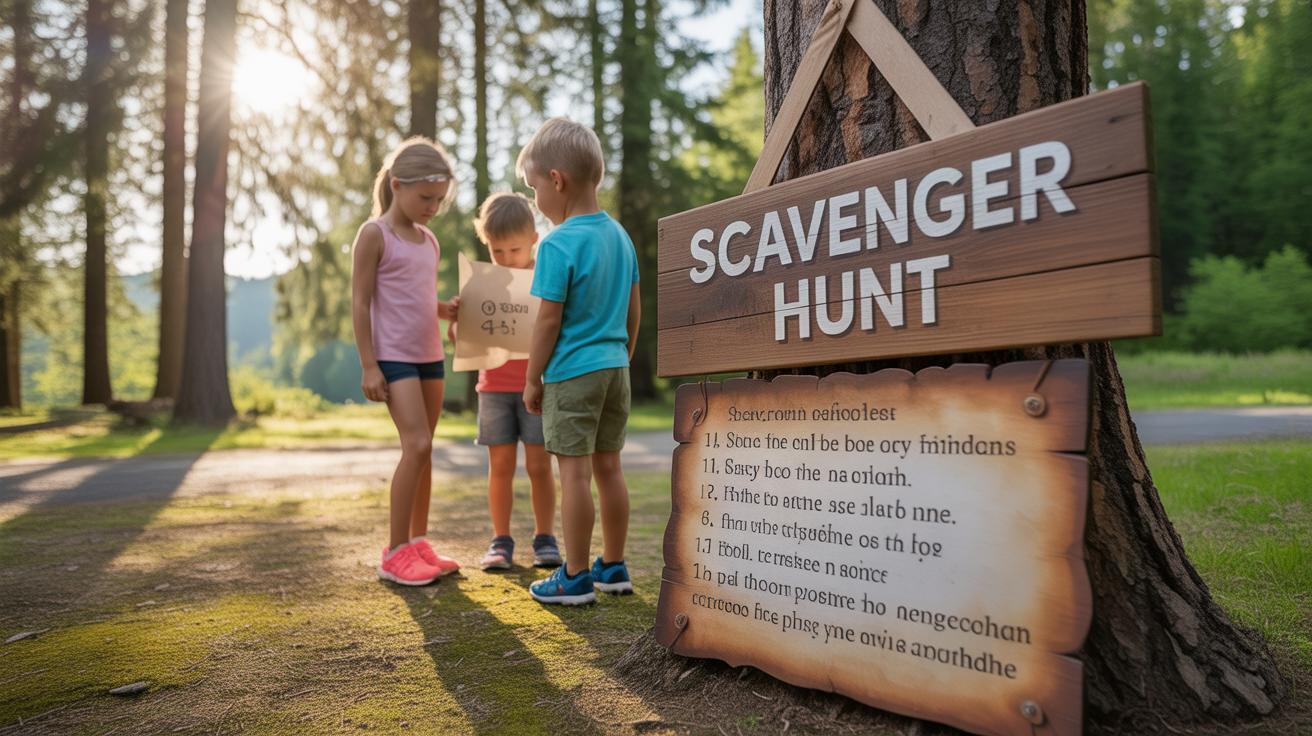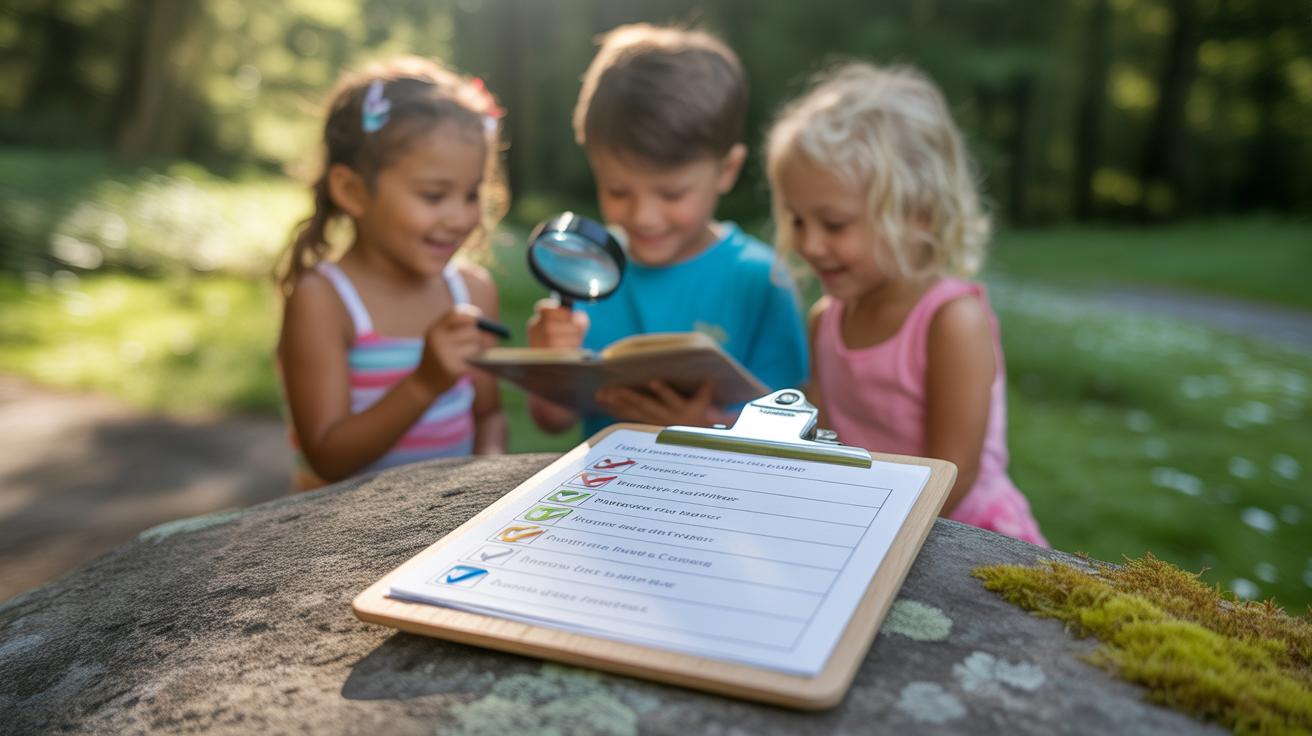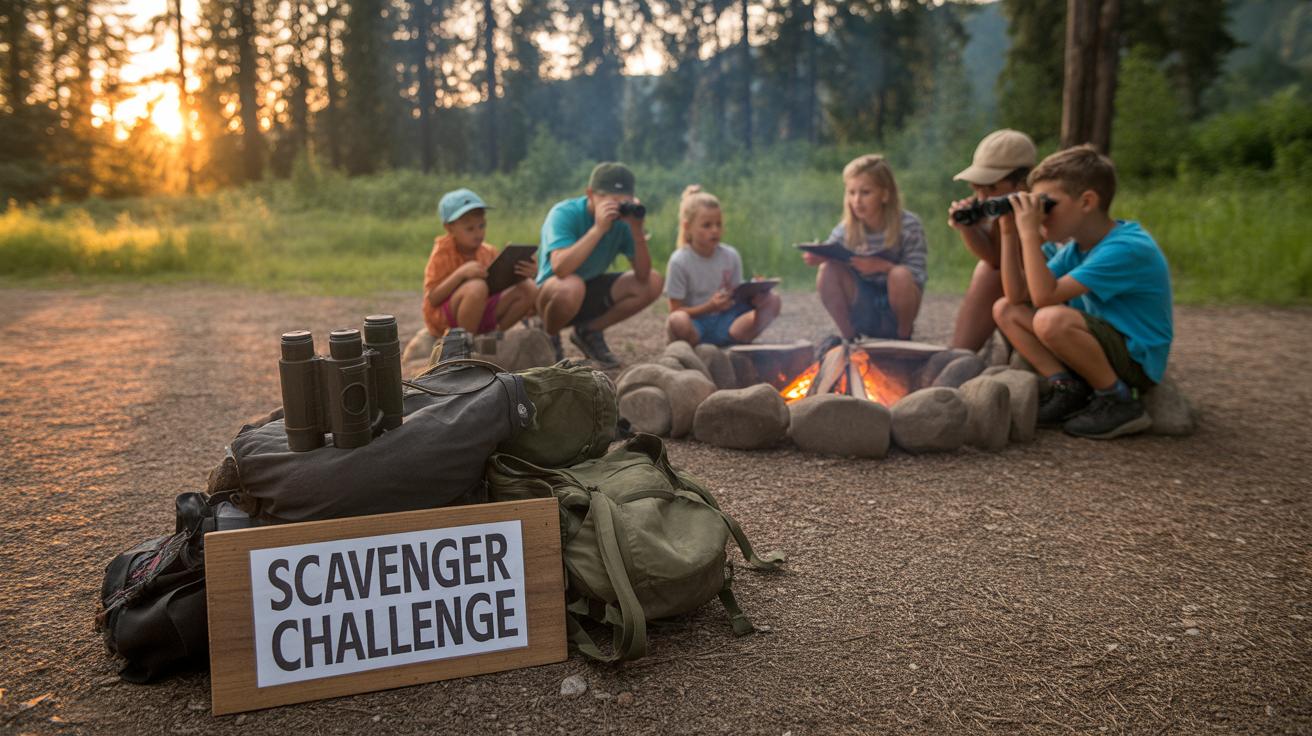Introduction
Backyard scavenger hunts offer a fun way to get kids moving and exploring outdoors. These activities help children connect with nature right in your own yard. They combine play and learning, keeping kids active and curious. A scavenger hunt encourages discovery, problem-solving, and teamwork among children.
This article explores how to set up a backyard scavenger hunt and other outdoor activities for kids. You will learn practical steps to make these games enjoyable and safe. Outdoor play supports physical health and mental growth in children, and we will explain why it matters to include these activities in your child’s routine.
Planning Your First Backyard Scavenger Hunt
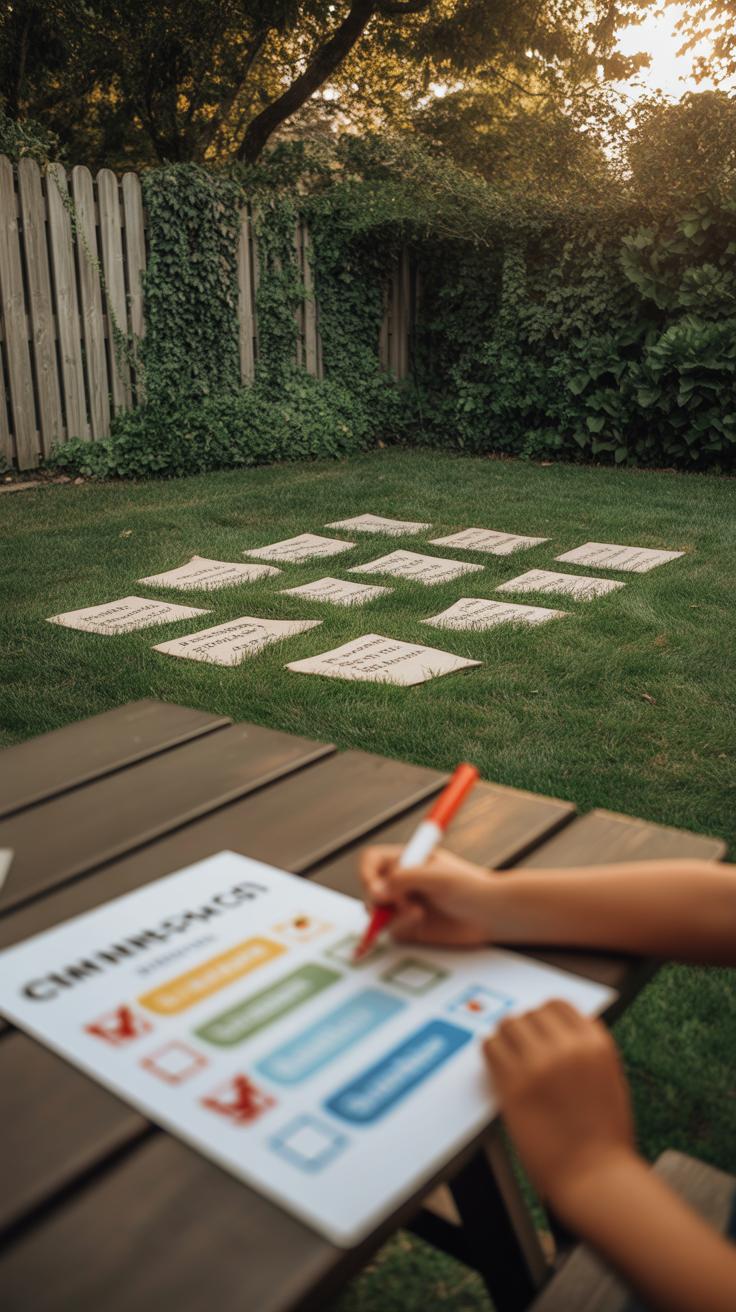
Starting a backyard scavenger hunt doesn’t have to be complicated. First, take a quick look around your yard—what’s easy for kids to spot without too much frustration? Think of simple, everyday things: a smooth stone, a yellow leaf, or even a small stick shaped a certain way. The key is balancing challenge and fun, so they don’t lose interest or get stuck.
Once you have your list, keep it short. About 5 to 10 items usually works well, especially for younger kids. Too many might overwhelm them, but too few could make it boring. Also, group the items by where they’re found to avoid kids wandering off too far.
Setting clear rules is just as important. Use language kids understand—something like, “Stay where you can see the house,” or “Be gentle when picking things.” Make sure everyone knows to share and not to run wildly, so no one gets hurt and everyone enjoys themselves. You can even try having a quick round to explain the rules and answer questions; it helps them remember.
Simplicity rules here. The focus is on fun and discovery, not a strict competition. Let the kids ask questions if they’re unsure and be ready to adapt the rules slightly depending on how things go. That flexibility often makes the game better for everyone involved.
Choosing Items for the Hunt
Look for things that are easy to find so kids don’t get frustrated. Soft leaves, acorns, certain flowers, or even garden tools left outside can work. Avoid anything sharp, poisonous, or oddly shaped that might cause trouble. I’ve found that letting kids help pick some items makes them more excited—and a bit more protective of the game.
When in doubt, pick items that encourage safe touching and exploring rather than things best left alone. You want the backyard to feel inviting, not like a minefield.
Setting Rules Everyone Follows
Clear, simple rules go a long way. Something like these often helps:
- Stay inside the yard boundaries.
- Handle items gently.
- Take turns if there’s a shared item.
- Ask before moving rocks or logs that might hide critters.
- Tell an adult if you find anything unexpected.
Keeping the rules straightforward makes it easier for kids to remember—and for you to enforce them without sounding like a drill sergeant. After all, the point is to have fun, not to create stress.
Tools and Materials Needed
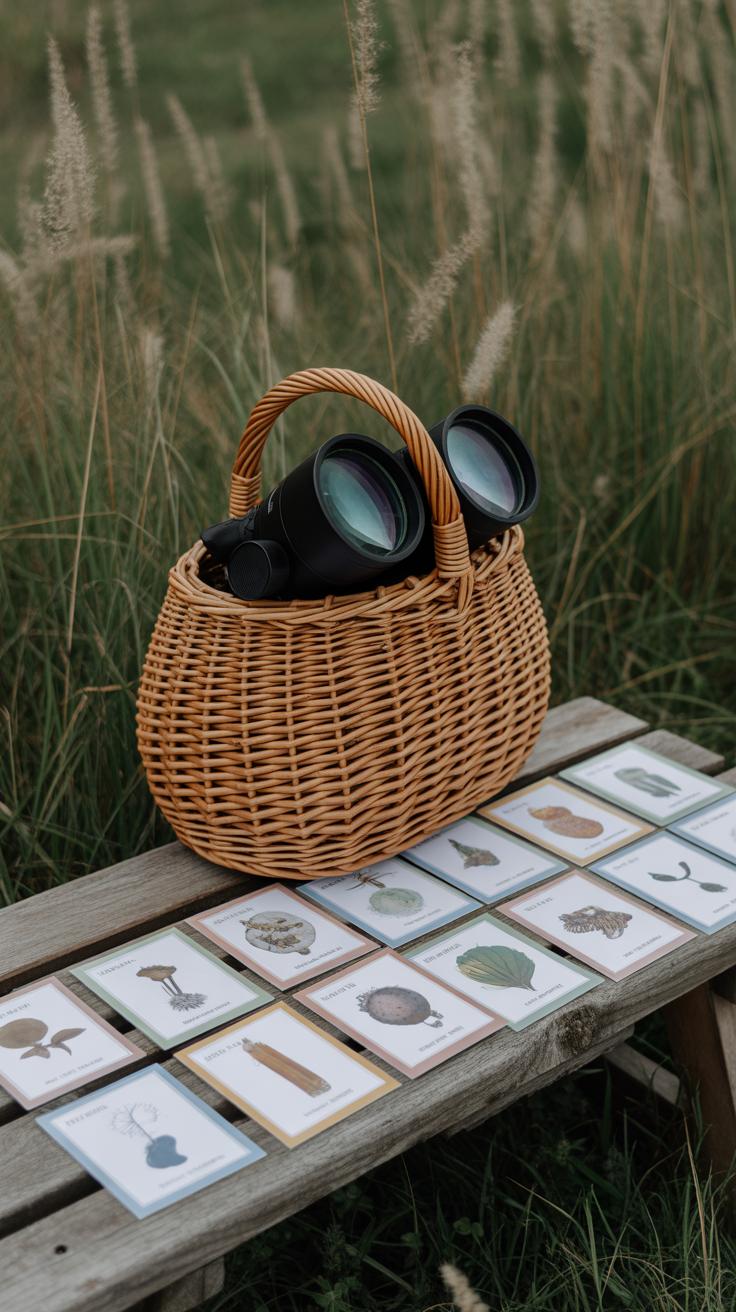
When setting up a backyard scavenger hunt, gathering the right tools really helps keep things organized and fun. You’ll want some sort of container—bags or baskets work best. Kids enjoy having a personal “stash” to hold their finds, and it keeps their hands free. Plus, it’s easier to carry things around without dropping or losing items. I once watched a kid chase after a loose acorn because it slipped from their pocket—it was amusing, but avoidable.
Checklists are key, but for children, simple, visual checklists work better than long written lists. Think of using pictures or stickers next to words, or even both. That way, even the youngest participants can see clearly what they’re looking for without needing much help. Pens or markers come into play here. Crossing off or coloring items found gives a real sense of progress. It’s like a little reward each time. Plus, if you make the checklist colorful, kids might actually want to use it.
These basic materials make the game flow much smoother. The checklist gives direction, bags hold treasures, and pens help mark progress. Without these, things could get chaotic quickly. Does your child prefer a basket over a bag? Maybe try both and see which leads to a better experience. Small comforts might seem trivial but they actually affect how engaged kids stay through the hunt.
Making the Scavenger Hunt Educational
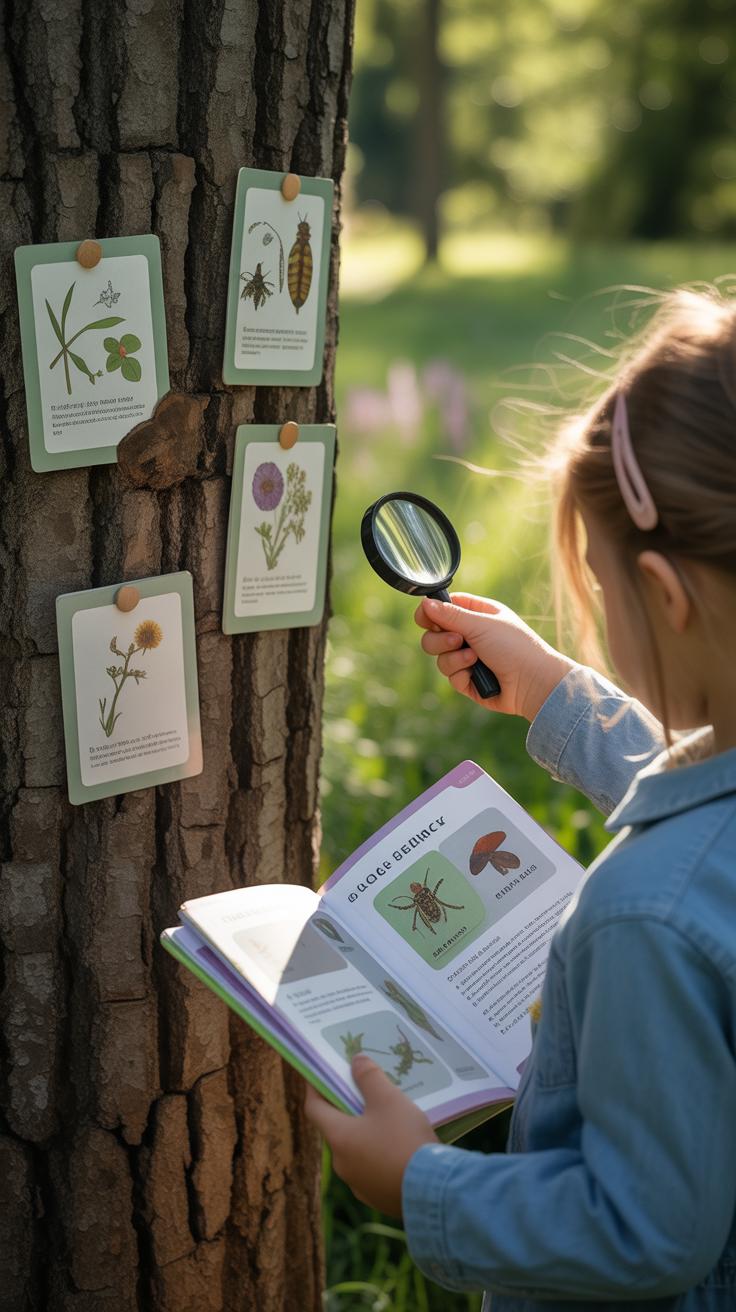
Including learning in your backyard scavenger hunt can turn a simple game into a memorable experience. You might try focusing on natural items like leaves, stones, or flowers that spark curiosity about the environment. For instance, picking out different types of leaves can lead to questions like: “Why are some leaves smooth while others are rough?” or “Can you find a leaf that’s bigger than your hand?” These small questions encourage observation and thinking without feeling like a lesson.
Color and numbers are easy to slip into the hunt too. Ask kids to find three yellow flowers or count how many green leaves they spot. It’s funny—sometimes kids will zero in on colors they like and overlook others, so prompting them can gently broaden their awareness. You could even challenge them to find a group of stones with different shades of gray or brown, which is a subtle way to explore subtle color variations.
Parents can keep the momentum going by asking open-ended questions during the hunt, such as:
- “What do you think this leaf feels like?”
- “How many different shapes can you find in the stones?”
- “Can you spot something red, then something blue?”
- “Which item do you think is the heaviest?”
Sometimes, the kids might surprise you with answers you hadn’t expected. And even if they don’t, the chance to pause and wonder together often makes the game richer. You don’t have to cover every detail about nature or numbers, but sprinkling in those moments of attention helps keep the hunt fun and a bit educational at the same time.
Extending Outdoor Fun Beyond the Scavenger Hunt
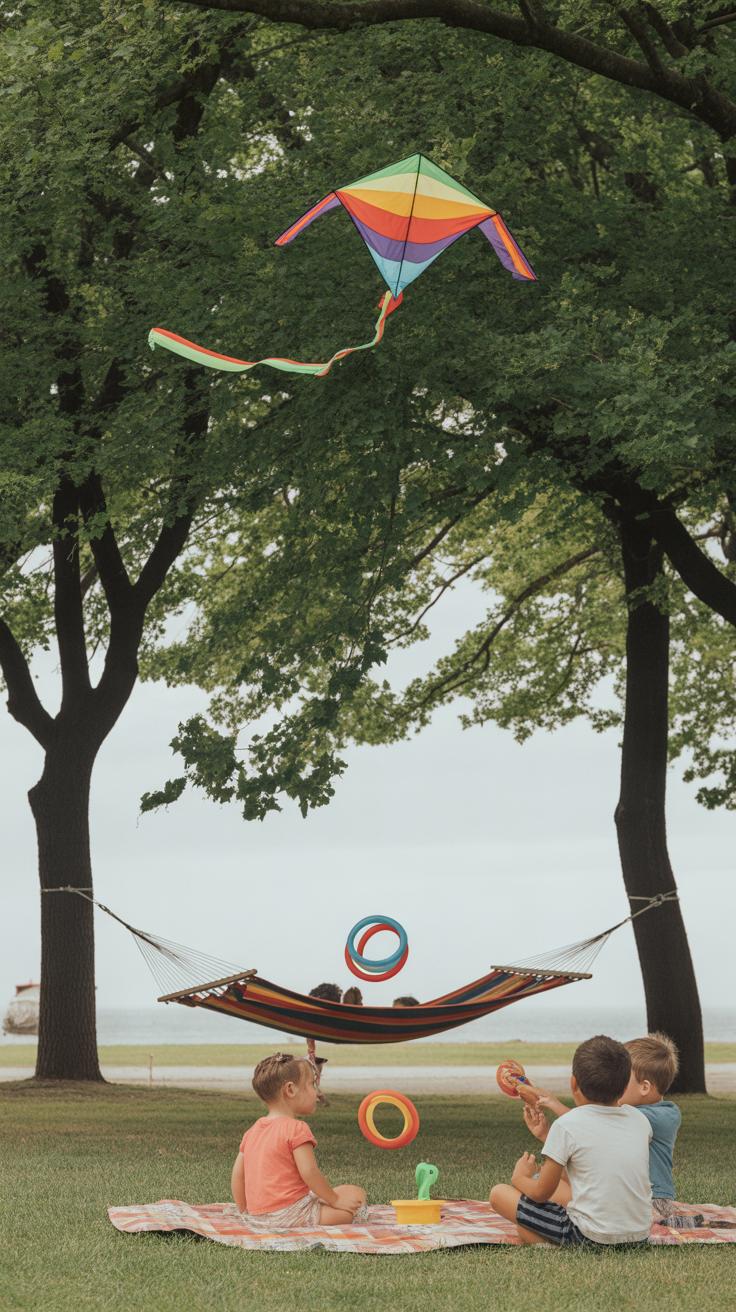
After the scavenger hunt winds down, it’s often tempting to let kids take a break. But keeping them active with simple outdoor games can be a great way to extend the fun. Think about games like tag, which require little to no setup and get kids running and laughing. Or hopscotch—a quiet pause from the chase, but one that still challenges balance and coordination. These games don’t just fill time; they build different skills and keep the energy flowing.
Then there’s gardening and nature crafts. These might not seem as vigorous, but they offer a different kind of engagement—slower, more thoughtful. A small garden patch or even pots on a patio can turn into a place where kids learn about plants, seasons, and responsibility. Collecting leaves, twigs, or flowers for crafts taps into creativity and connects them more deeply with nature. Maybe your child will make a leaf collage or a twig frame; who knows, it might spark a new hobby or spark curiosity about the outdoors that lasts beyond the yard.
Have you noticed how mixing active play with calm, creative moments often helps kids stay interested longer? Combining these activities feels natural and might just keep the whole backyard adventure alive for hours.
Encouraging Teamwork and Sharing
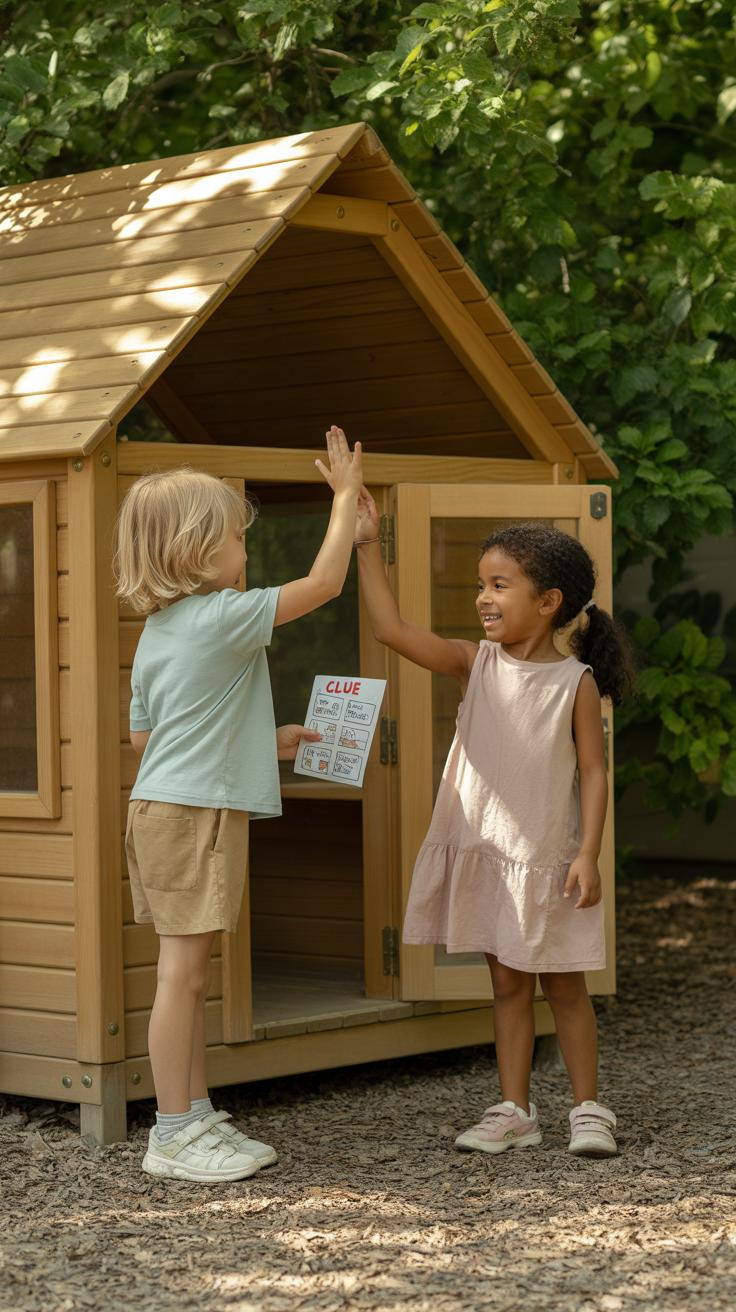
Scavenger hunts naturally invite kids to work together, which often leads to unexpected moments of cooperation and kindness. When children hunt in pairs or small groups, they start to learn about sharing tasks—like who looks under the bushes and who checks the trees. It’s not just about finding the items; it’s about listening to each other and sometimes even offering help when someone gets stuck or unsure.
Playing in small teams usually makes a big difference. Groups of two or three kids encourage more meaningful interaction than a large crowd where some get left out or distracted. It also gives shy children a chance to speak up in a less overwhelming setting, which I’ve noticed helps them gain confidence. Plus, it forces kids to negotiate and make choices together—who takes which role, or how quickly to move on. These teamwork skills aren’t obvious at first but become clearer as kids navigate the hunt.
Another part of the fun is sharing what they’ve found. When children show each other their discoveries or tell stories about how they found a hidden leaf or a small rock, it sparks conversations. These moments help kids practice communication and explain their thinking. In my experience, kids who share their ‘aha’ moments tend to bond faster. It’s almost like the hunt creates a little community; even if they started just as teammates, they often end up friends, connected through those shared experiences.
Keeping Kids Safe Outdoors
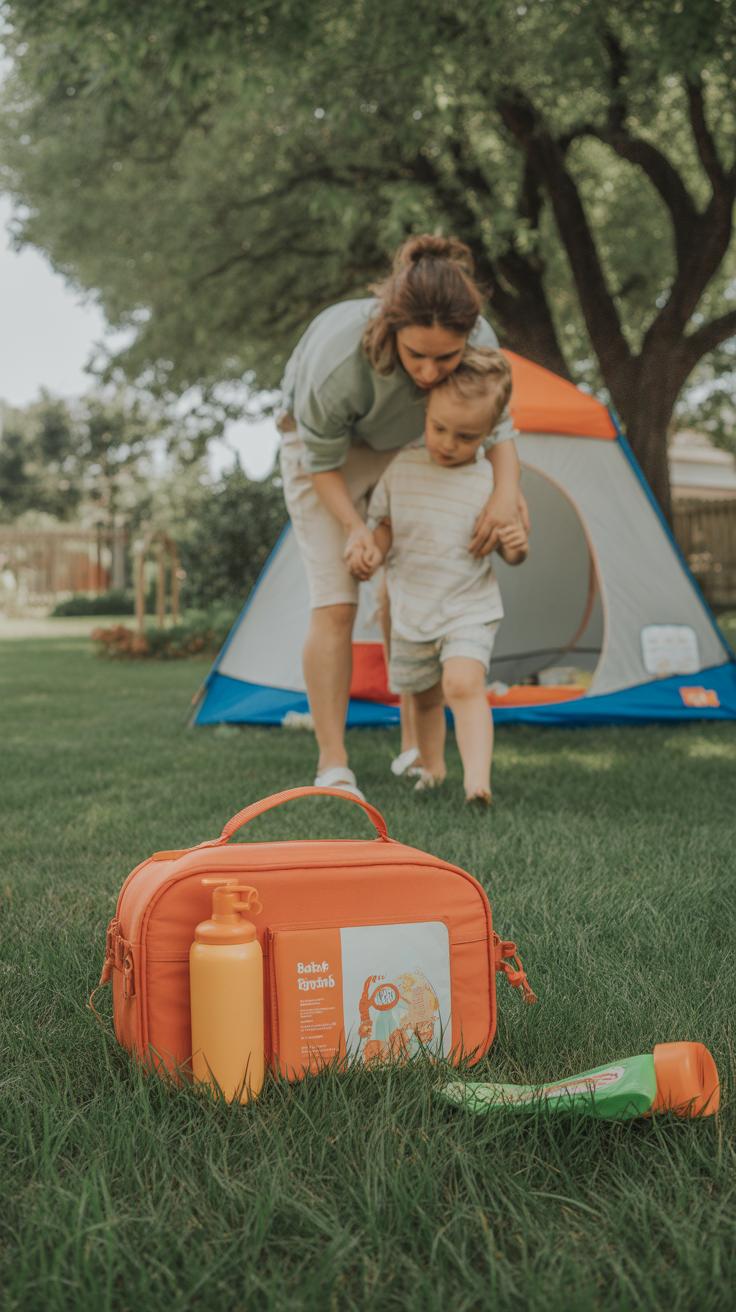
Supervision and Boundaries
When kids run around the backyard during a scavenger hunt, keeping an eye on them is really key. It’s tempting to just set them loose, but a little supervision goes a long way. You don’t need to hover, but staying close enough to hear or see what’s happening can prevent many little mishaps. Sometimes, kids get caught up exploring spots you didn’t expect—so setting clear boundaries at the start helps a lot. Maybe that means no venturing near the street or beyond the garden shed. Mark those spots physically if you can, with cones or rope, so kids can remember where it’s safe to play. You may find that kids respect these limits more if you explain why. It’s not about restricting fun but keeping everyone okay.
Weather and Allergies
Unofficial rule: the weather can change faster than you expect, especially when kids are outside. Hopefully, you’ve checked the forecast, but still, packing a lightweight jacket or sun hat isn’t a bad idea. If it suddenly turns chilly or sunnier than planned, you’ll thank yourself. I’ve learned this after letting my kids play without a backup plan—they ended up cold and grumpy. On allergies, if your child is prone to hay fever or reacts to grass or pollen, try scheduling activities during times when pollen is lower, like late afternoon. Having antihistamines on hand is helpful too. And consider the terrain—some areas might have more bug activity or plants that trigger reactions. Knowing the backyard’s quirks can keep the day from turning stressful. After all, outdoor fun and sniffles don’t really go hand in hand, do they?
Adapting Activities for Different Ages
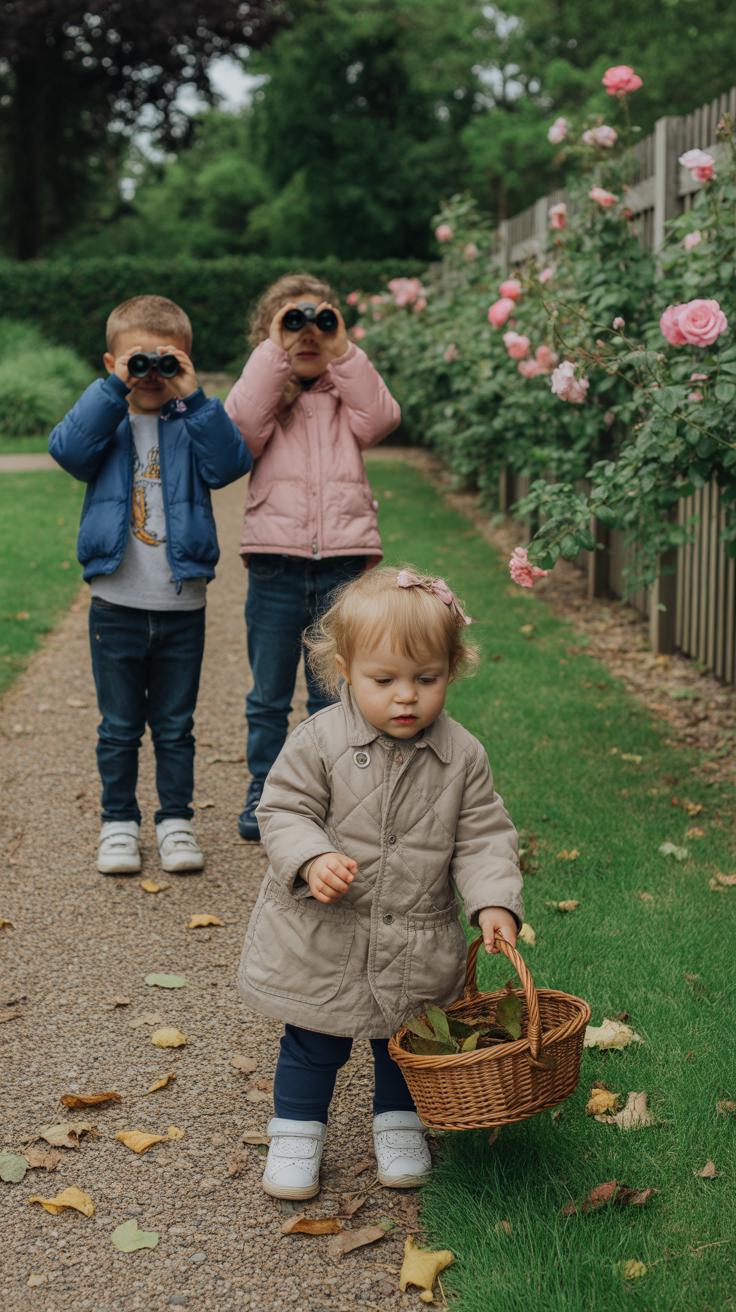
When planning a backyard scavenger hunt, it’s easy to forget that kids of different ages need different kinds of challenges. What might be thrilling for an eight-year-old could quickly overwhelm a toddler, and the opposite is true too—they might find some activities too slow or boring if they aren’t tailored right.
Younger Children
For preschoolers and toddlers, simplicity is key. A scavenger hunt that focuses on colors or basic shapes helps keep things fun and manageable. For example, ask them to find something red, something soft, or something round. You might say, “Can you find a leaf?” or “Let’s look for a smooth rock.” These simple prompts encourage observation without causing frustration.
It helps to keep the area small and well defined, ensuring they don’t wander too far, and offering plenty of encouragement when they find something. Use pictures or stickers as clues rather than words since younger kids might struggle with reading.
Older Kids and Challenges
Older children want something with a bit more brainwork. Try adding riddles, timed challenges, or multi-step tasks, like finding a ‘hidden’ item based on a series of hints. You could create a list that includes more obscure natural items or even introduce a photo scavenger hunt where they capture pictures of certain things rather than bringing items back.
Or perhaps you want to mix in problem-solving or teamwork by having kids work in pairs or groups to complete a series of challenges. This not only deepens engagement but also makes the hunt social and a touch competitive, which some kids really enjoy.
Sometimes, pushing kids a little out of their comfort zone is good, but it’s also okay to shift gears if you see their interest starting to fade. After all, the goal is to keep the fun alive while still making the hunt a little different for everyone involved.
Creating Lasting Memories with Outdoor Play

Spending time outside with your kids is more than just fresh air and sunshine. It’s about making moments that linger—those small events kids recall years later, like spotting a colorful leaf or finding a hidden pinecone during a scavenger hunt. When your family regularly goes outside to explore together, these experiences pile up. Over time, they become memories your children carry with them, shaping how they see the world and their place in it.
These moments also nudge healthy habits in subtle ways. Moving around, breathing outdoor air, and taking breaks from screens helps settle energy and improve mood. Over weeks and months, the habit of outdoor play feels less like a chore and more like a choice, one that feels good and normal. That’s not something kids always realize right away, but they’ll thank you for it later.
Have you noticed how certain smells or sights can instantly bring back childhood memories? This is part of how outdoor play builds emotional connections over time. Those shared smiles, little discoveries, and gentle moments of quiet can create a foundation for happiness, anchored in real life, beyond casual distractions.
Building Family Traditions
Creating a tradition often starts small and quietly. Maybe it’s a quick scavenger hunt after dinner or a weekend ritual to find something new in the yard. These small, repeated actions become part of the family rhythm. Kids start to expect them, sometimes even remind you. They offer something steady in a busy world and create a shared story, something that feels just theirs.
When you build traditions around outdoor activities, it’s easy to focus on the fun—but the real power lies in the consistency. Rituals can bring comfort and a sense of belonging. And while traditions usually aim to be relaxed and joyful, they can also spark a little friendly competition or inspire creativity, which kids love. Over time, these hunts take on a special place in family life, something each child remembers fondly and sometimes can’t wait for.
Encouraging Lifelong Outdoor Enjoyment
Early experiences matter. When children spend time outdoors in positive ways, they often develop a natural attraction to nature and movement. It’s not just about jars of bugs or leaves collected in backpacks. It’s about feeling at ease outside, seeing it as a place to explore and a source of curiosity.
This early comfort with the outdoors can lead kids to seek out nature later in life, even when other distractions grow louder. They may not become experts or even avid hikers, but a love of simple outdoor moments can last a lifetime—something that calms, energizes, or refreshes when needed.
Do you remember a moment outside from your childhood that stuck with you? That feeling might hold the key to helping your kids form their own appreciation. Odds are, with gentle encouragement and regular chances to play outside, you’ll see that love of nature grow in places you wouldn’t expect.
Conclusions
Exploring backyard scavenger hunts and outdoor activities shows the value of engaging children outside. These games boost energy, creativity, and social skills. Making time for outdoor fun helps you support your child’s overall well-being and growth.
Try setting up your own scavenger hunt or other backyard games. You will notice how much children enjoy learning and playing outside. These simple activities provide lasting memories and healthy habits that benefit kids every day.



